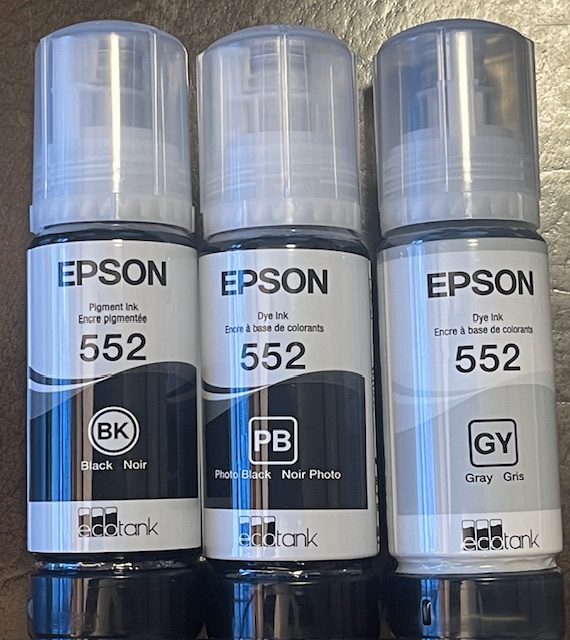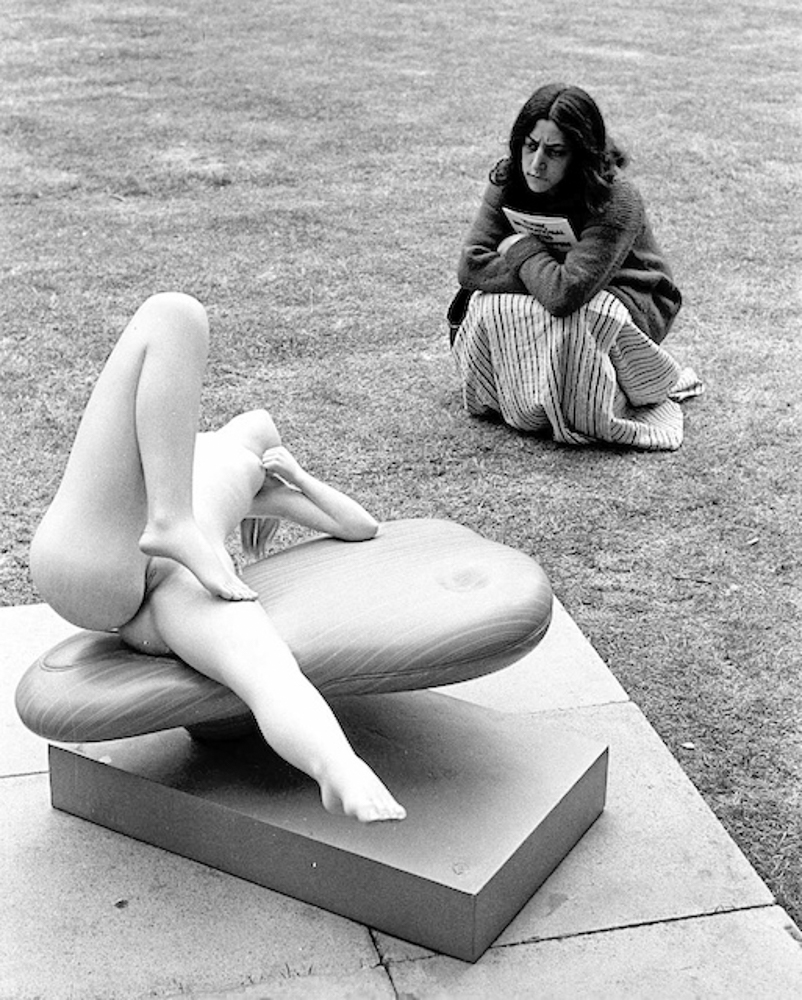Not at all bad.
For an index of all articles about the Epson ET8550 printer, click here.
Keith Cooper of Northlight Images has an excellent video about monochrome print making on the Epson ET-8550 here. He knows better than to obfuscate with fancy words but his opening dissertation on the issue with many dye ink jet printers reflecting color casts under artificial lighting is important. That behavior is known as ‘metamerism’, and you really do not want it. Suffice it to say that using HP Premium Gloss paper there is no evidence of metamerism and Cooper reports that all is also well with Epson Premium Luster paper.
What is intriguing about the design of the Epson ET-8550 is that it uses no fewer than three monochrome inks:

Pigment Black, Photo Black Dye and Photo Grey Dye Epson ET-8550 inks
Because the ET-8550 doubles as an office printer, printing on regular paper, it includes pigment ink for that purpose. Pigment ink, like wall paint, dries on the surface and is not absorbed into the substrate, whereas dye ink must be absorbed and the paper chosen in photographic applications must be capable of absorbing ink. Not all photo papers will do that.
Whereas you might think that that no pigment ink would be used in making monochrome photo prints in the ET-8550 Cooper avers this is not the case and it appears that Epson is using some clever combination of the PB Photo Black Dye ink and the BK black pigment ink in printing monochrome images. Do we care? Well, the only thing that matters is the result, so to test things I made two 13″ x 19″ monochrome prints:

Nikon D3x, 35mm f/1.4 Sigma, color original converted to B&W in Lightroom

Leica M3, 50mm Summicron, TriX, scanned in a Canon 4000 film scanner, monochrome original.
In both cases I used the Freestyle custom profile described here. Both prints are drop dead gorgeous – no color cast, no metamerism, just pure monochrome tones.
So it appears that the ET-8550 does a fine job of monochrome printing, but take heed of Cooper’s warning that papers differ, so experiment, and use the right color profile. Epson Premium Luster appears to be a safe bet, based on his experiments, or HP Premium Gloss, based on mine. The Epson printing utility Cooper refers to in the video linked above is not to be found in the US and I much prefer using Lightroom as it simplifies work flow – one tool for all prints. I suggest you adopt a similar philosophy.
Paper jams:
Confirming that with photo printers “It’s always something”, I find that if more than 5 sheets of paper are loaded into the rear paper feeder, the printer will jam. This is for relatively thick paper. The HP Premium Gloss I use weighs in at 280 g/sq. m. So keep it to 5 sheets or less, or be prepared to try and decipher Epson’s arcane un-jamming instructions, invoking garage language and generally wasting time in the process.